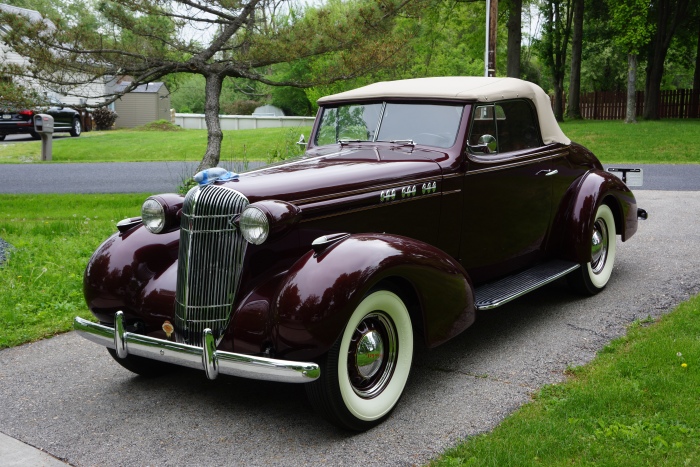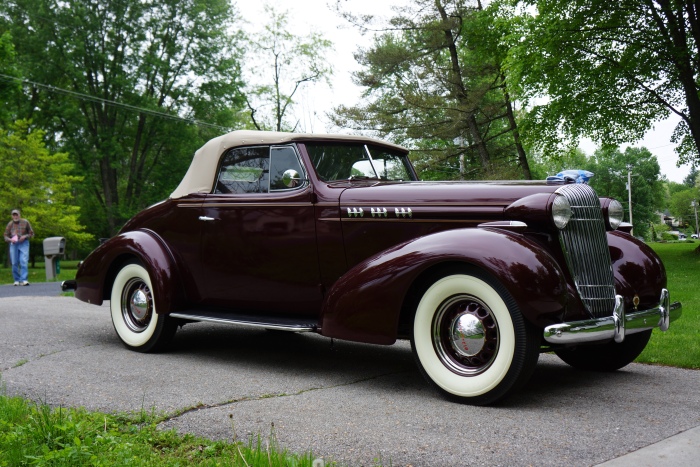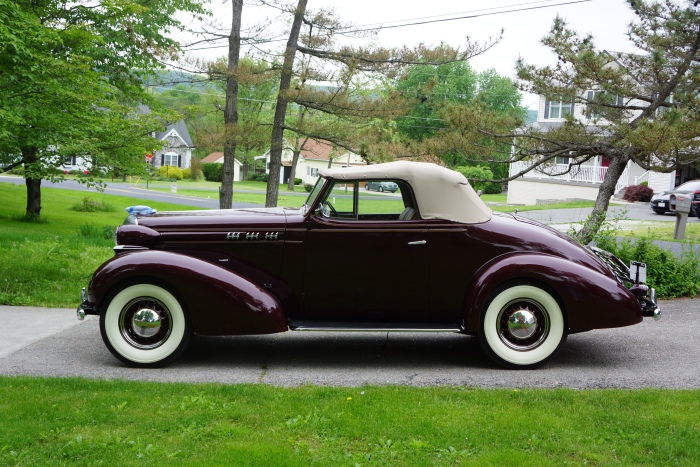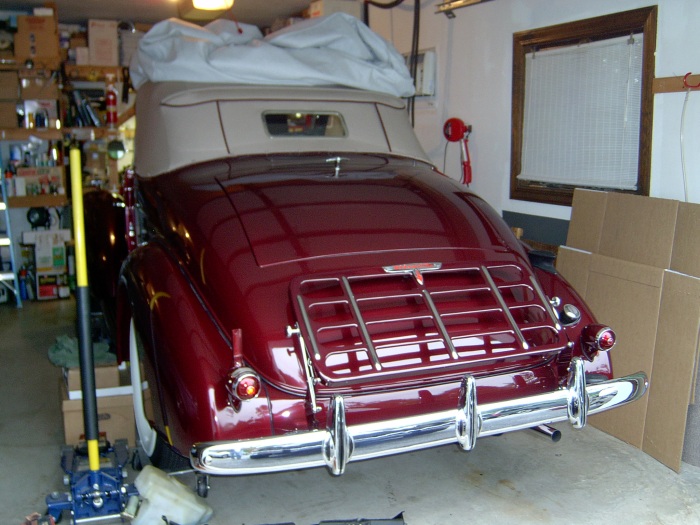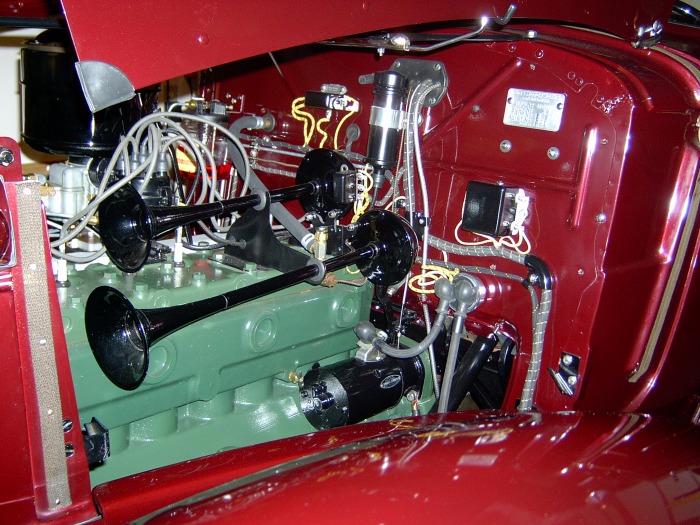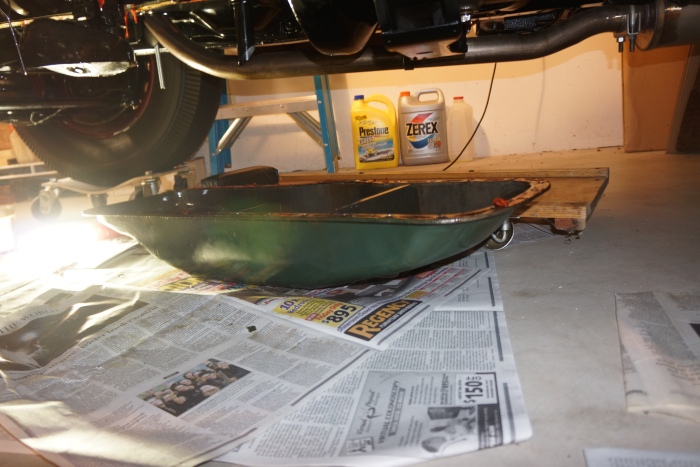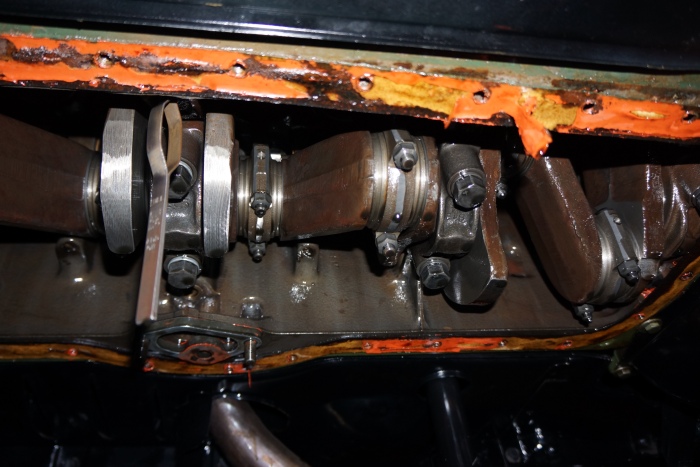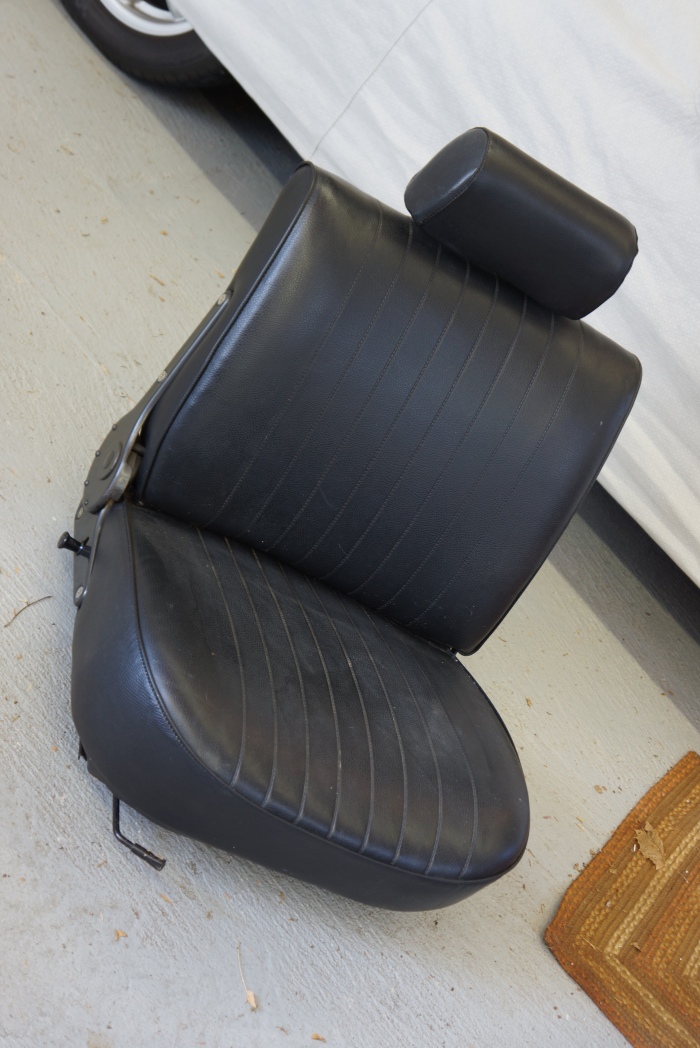This past weekend I had the opportunity to spend a day with my good friend “Pete”, the fellow who sold me my Alfa Romeo after his 45-year stint with it. Pete has always had an eclectic collection of older and newer special-interest cars, and one of the oldest in his ever-changing fleet is his 1936 Oldsmobile L-36 convertible, with an inline eight-cylinder engine. During this most recent visit, I finally got the chance to drive it.
First, a history lesson: in the 1930s, General Motors’ car marques consisted of more than just the five that may come to mind. Besides Chevrolet, Pontiac, Oldsmobile, Buick, and Cadillac, there were Marquette, Oakland, and LaSalle. Marquette, Buick’s junior division, was dead and gone after 1930, and Oakland survived only one year longer than that. LaSalle, Cadillac’s sister division, produced its last car in 1940. Even in the 1930s, GM priced its cars in a very careful step-by-step fashion.
Omitting the low and high outliers Chevrolet and Cadillac, if you were shopping for a mid-priced GM convertible in 1936, you had no fewer than these 8 different models from which to choose:
| YEAR | MAKE | MODEL | WHEELBASE | ENGINE | PRICE |
| 1936 | Pontiac | Master Silver Streak cabriolet | 112″ | inline-6, 80 hp | $760 |
| 1936 | Oldsmobile | F-36 convertible | 115″ | inline-6, 90 hp | $805 |
| 1936 | Pontiac | DeLuxe Silver Streak cabriolet | 112″ | inline-6, 80 hp | $810 |
| 1936 | Pontiac | DeLuxe 8 Silver Streak cabriolet | 116″ | inline-8, 87 hp | $855 |
| 1936 | Buick | Series 40 Special convertible | 118″ | inline-8, 93 hp | $905 |
| 1936 | Oldsmobile | L-36 convertible | 121″ | inline-8, 100 hp | $935 |
| 1936 | Buick | Series 60 Century convertible | 122″ | inline-8, 120 hp | $1,135 |
| 1936 | LaSalle | Series 50 convertible | 120″ | inline-8, 105 hp | $1,255 |
The chart is arranged in price order, low to high. First note, not surprisingly, that the six-cylinder models all fall to the bottom of the range. The least-expensive 8-cylinder is the most expensive of the three Pontiacs. Don’t downplay the inclusion of “wheelbase” in this data: a vehicle’s wheelbase, and hence overall length, contributed mightily to its visual statement as a luxury item. The 4 straight-eight GM convertibles pricier than the Pontiac 8 have wheelbases 2-to-6 inches longer than Pontiac’s 116”, and engine output figures which are 5-to-33 horsepower above Pontiac’s meager 87.
The savvy buyer who might have compared the two Buicks, the Olds, and the LaSalle eights may have realized that for just $30 more than the “junior Buick”, s/he could get an Olds with a 3-inch longer wheelbase, and 7 more ponies to pull that extra length. The next choice in this price hierarchy, the “senior” Buick (admittedly with a big power jump) cost over 20% more. In this light, the Olds L-36 appears to be a smart choice.
Actual sales figures bear this out. According to my copy of the “Encyclopedia of American Cars”, Buick sold only 766 Series 60 Century convertibles, while Oldsmobile sold 931 L-36 convertibles. What does this prove? Only that the original purchaser of Pete’s ’36 did their homework, and would likely be shocked to know that the car was still around 83 years later.

Regarding my time behind the wheel, the driving experience was sublime. That straight-8 has torque to spare, so shifting the 3-speed gearbox (with lever on the floor) could be conducted at a leisurely pace. First gear is almost a granny gear. At one stop sign, facing downhill, I started in 2nd, with no complaints from engine or clutch. I found that I could comfortably put it into top gear by the time I reached 20 mph, and acceleration was always smooth and velvety, if a bit unhurried compared to modern metal.
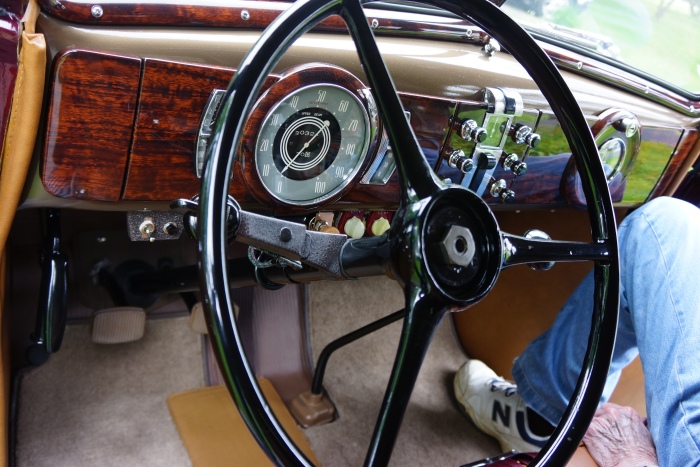
But when you’re cruising in a ’36 Olds convertible, what’s the rush? The heavy steering requires that you take your time in turns anyway. Actually, after a few lefts and rights, I got the hang of it. Just think about the turn 100 feet or so before reaching it, begin to dial in some lock, and point that long nose in the general direction you’d like to head. It’s easy, really.
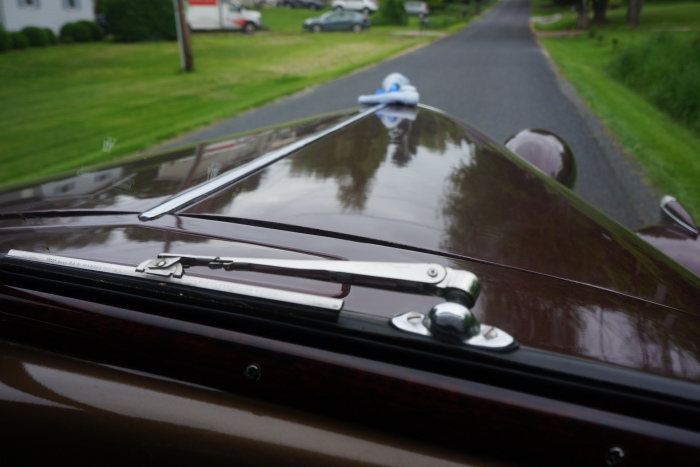
All the pedals, extending through the floor just like the Alfa, had good feel. The brakes brought the car to stop without drama, at least from 30 mph (my max speed for the day). The clutch exhibited no signs of chatter or slipping, and shifting was smooth on the all-synchromesh box. (Pete caught me double-clutching my first shift and said “you don’t need to do that!”) Visibility out the front was very good, but out the rear was inhibited by the small opera window in the erect cloth top.
The odometer on this car reads 60,000 miles, which is nothing for a car this age, but perhaps a significant number for a car of this configuration. And back to that production total of 931: how many have survived? First, these are convertibles, which reduces their lifespan (theft, water damage, rust). Second, by the time this car was 20 years old, the modern V-8 engined car, with its attendant power steering, brakes, windows, etc., would have made this ’36 look like the dinosaur it was. And last, as sad as it is to acknowledge this, those in the collector car hobby have been eyeing Fords, Chevrolets, and “true luxury” nameplates like Packard and Auburn. Oldsmobiles were not on most hobbyists’ radar. Taken together, all of these factors make this one rare bird. I’d guesstimate that there might be a few dozen 1936 L-36 convertibles out there, and many fewer that look and drive as good as this one.
This particular jewel of the motor car deserves to be kept in the loving condition it’s in, with occasional maintenance use to keep it fresh. I’ve already volunteered to be available for future test drives in order to accomplish just that.
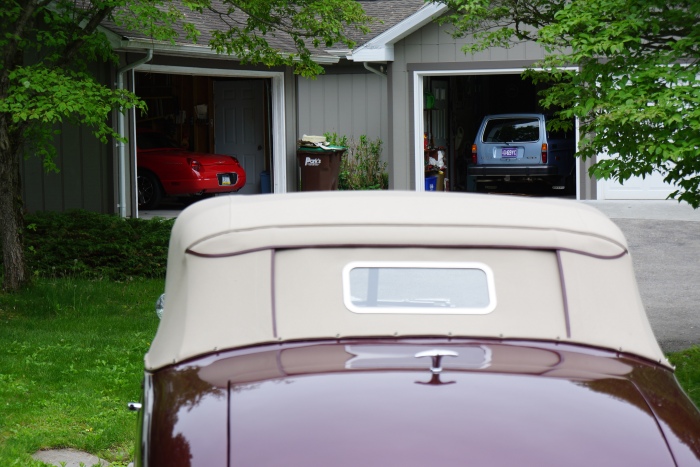
POSTSCRIPT:
This particular vehicle is for sale by its owner. Please contact me directly if you are interested, or might know of someone who is.
All photographs copyright © 2019 Richard A. Reina. Photos may not be copied or reproduced without express written permission.
